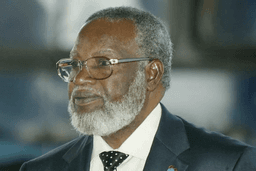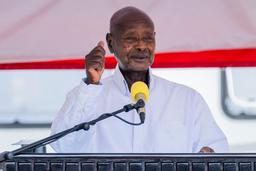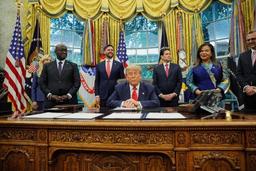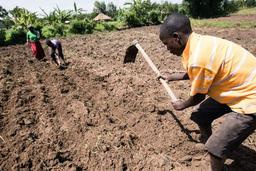Mauritius
Mauritius, officially the Republic of Mauritius, is an island country in the Indian Ocean, about 2,000 kilometers off the southeastern coast of East Africa, east of Madagascar. It includes the main island, as well as Rodrigues, Agaléga, and St. Brandon


1.26 million

East Africa

2,040 sq km

GMT+4

English

Mauritian Rupee

Hinduism, Christianity and Islam.

President Dharambeer Gokhool
BRIEF
Mauritius is an island nation located in the southwest Indian Ocean, east of Madagascar and within the Tropic of Capricorn. Part of the Mascarene Islands, it includes the main island of Mauritius, along with Rodrigues, Agaléga, and St. Brandon. Volcanic in origin, the country features a central plateau, surrounding mountains, and is encircled by coral reefs. Mauritius has a rich colonial history, having been ruled by the Dutch, French, and British before gaining independence in 1968. Today, it is a multicultural society influenced by Indian, African, European, and Chinese heritage. The nation operates as a parliamentary democracy, with a president as the chief of state and a prime minister as the head of government. Its economy has evolved from being heavily dependent on sugarcane to a diversified system with strong sectors in tourism, financial services, and outsourcing, positioning Mauritius as an emerging business hub in the Indian Ocean.
NATIONAL ANTHEM OF MAURITIUS
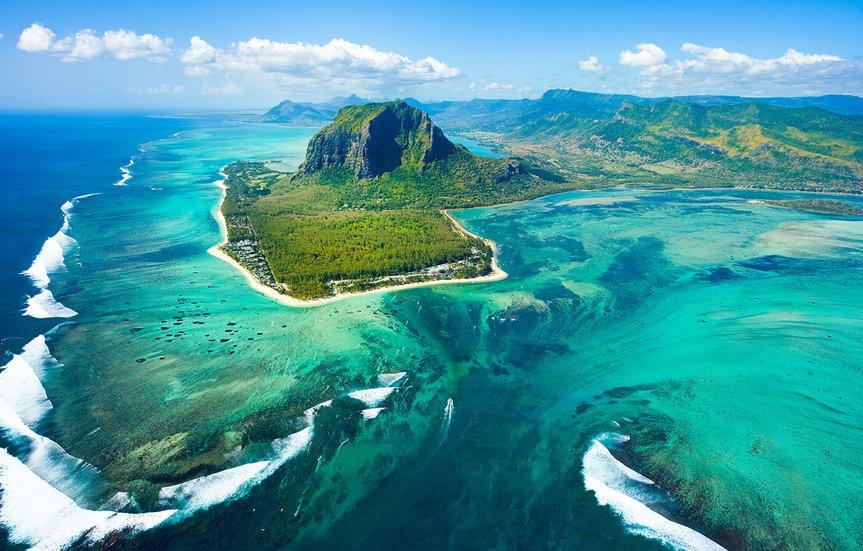
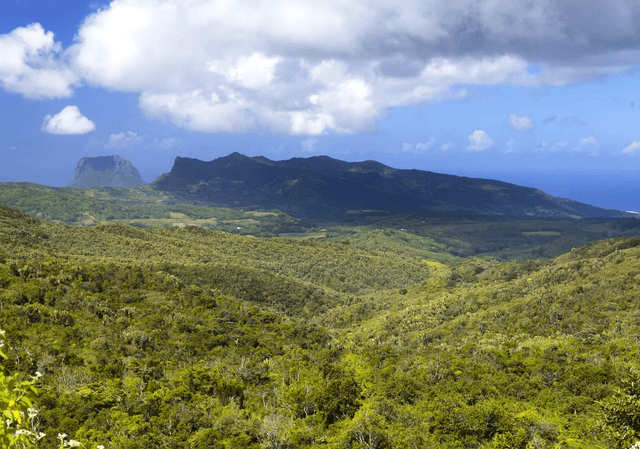

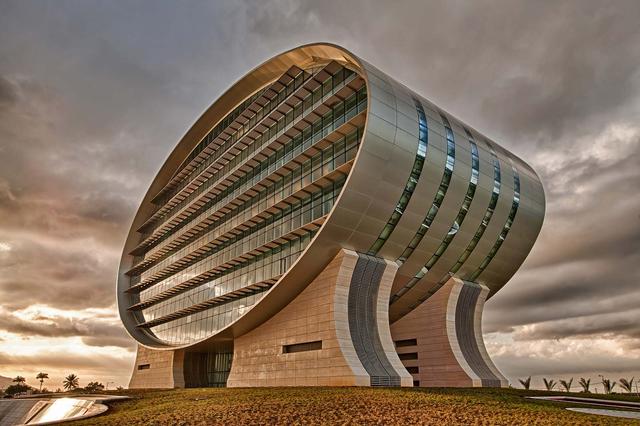
Cultural Life
Cultural milieu
Mauritius boasts a vibrant and diverse cultural life shaped by a rich blend of Indian, African, Chinese, and European influences. Often referred to as a "rainbow nation," the island is celebrated for its harmonious coexistence of different ethnic and religious communities. This multiculturalism is vividly expressed through its cuisine—a unique fusion of French, Indian, African, and Chinese flavors—as well as its music and dance, particularly the Sega, a traditional Creole performance accompanied by the rhythmic ravane drum. Festivals such as Diwali, Eid, Chinese New Year, and Christmas are widely celebrated, reflecting the country’s cultural inclusivity. English is the official language, but French, Mauritian Creole, Hindi, Tamil, and others are also commonly spoken. Mauritius also supports a dynamic arts and literary scene, with French literature historically prominent and Creole gaining increasing recognition. Religious freedom is deeply valued, with Hinduism, Christianity, Islam, and Buddhism all practiced in an environment of interfaith respect. Historical sites like Aapravasi Ghat and Le Morne Cultural Landscape, both UNESCO World Heritage sites, serve as poignant reminders of the island’s colonial past and the legacy of slavery and indentured labor.
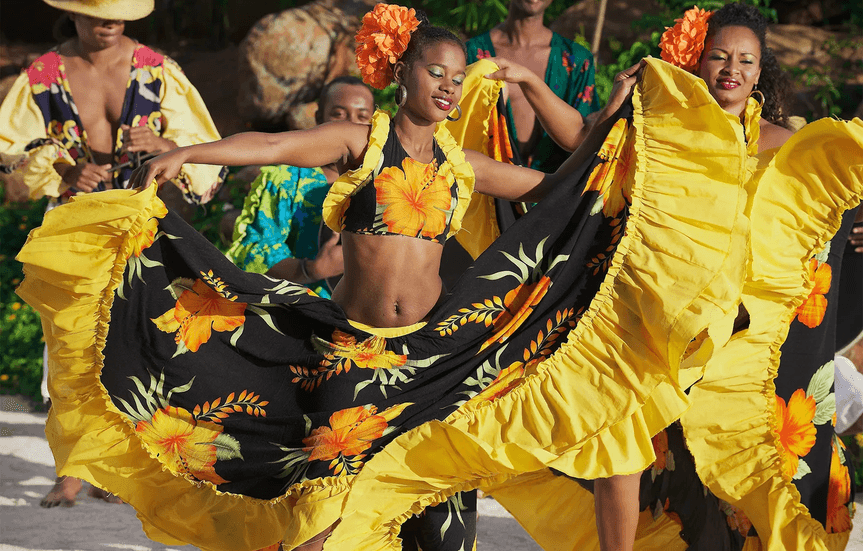
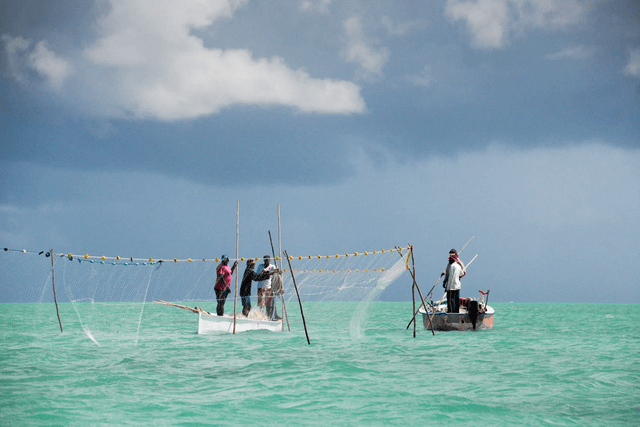

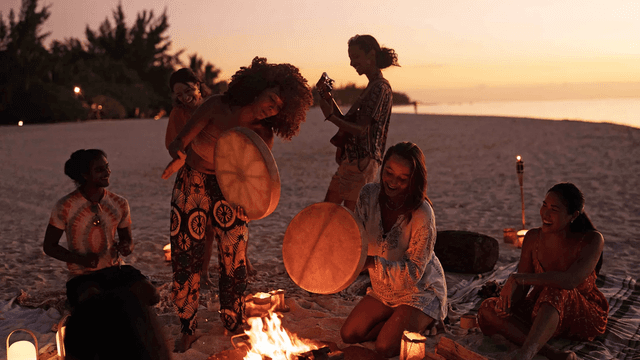
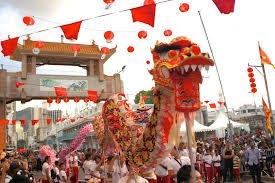
Daily life and Social customs
Daily life in Mauritius reflects its vibrant multiculturalism and strong sense of social harmony. Known as a "rainbow nation," the island is home to a blend of cultures, languages, and religions including Hinduism, Christianity, Islam, and Buddhism. People live with mutual respect and often share in each other’s festivals and traditions. Hospitality, community values, and respect for elders are important parts of daily interactions. Handshakes are common greetings, and close friends and family may greet each other with kisses on both cheeks. Public transport is widely used, and many homes, especially older ones, have unique architectural styles.
Mauritians work mainly in agriculture, manufacturing, commerce, and services. Housing varies, with many owning property and others renting in urban areas. Food plays a central role in daily life, with rice served alongside stews of fish, chicken, or meat and local vegetables. In their free time, people enjoy beach picnics, forest hikes, paddle boarding, and social gatherings. Social etiquette values politeness, humility, and friendliness, though sometimes interactions can be influenced by ethnic or religious identity. Cultural events and visits to local villages offer both residents and visitors a chance to experience the island’s rich traditions and strong community spirit.
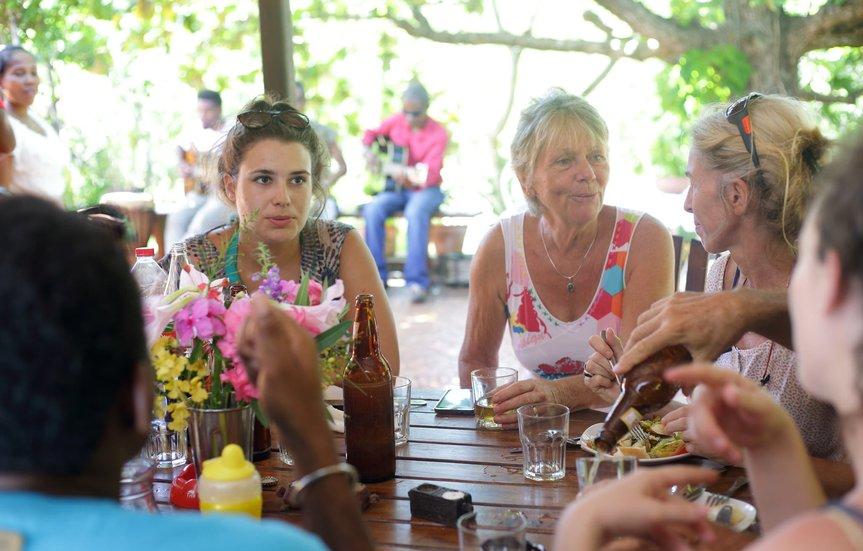
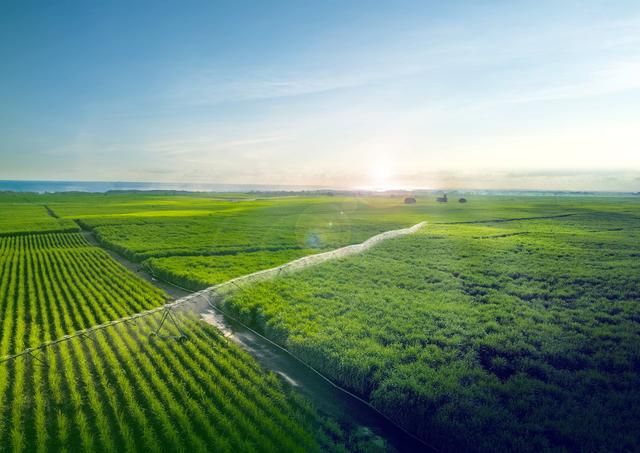
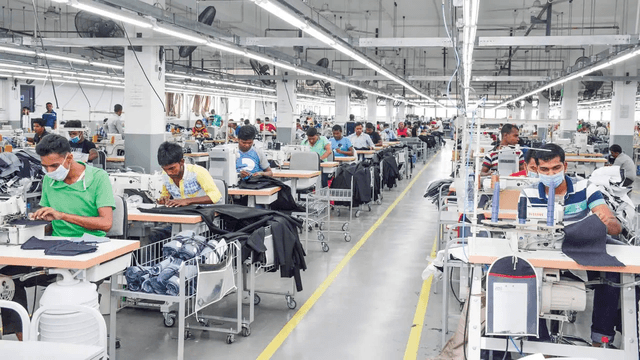
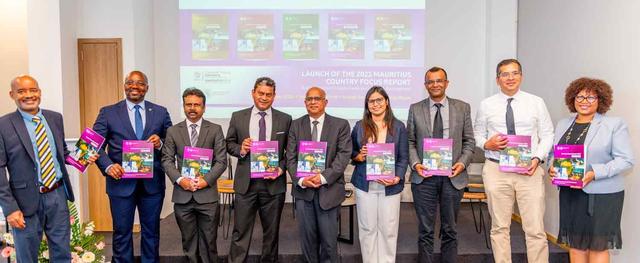
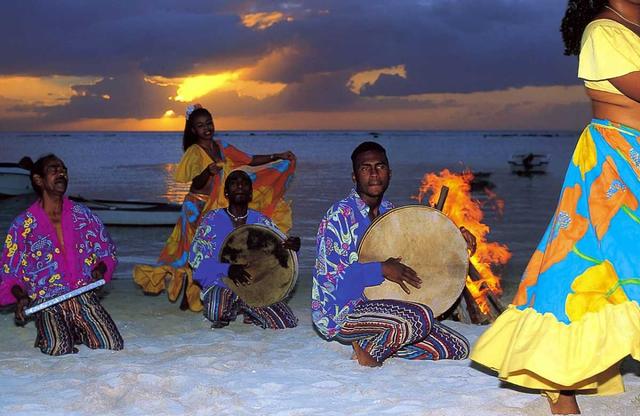
Cuisines
Mauritian cuisine is a vibrant fusion of African, Chinese, European (primarily French), and Indian influences, reflecting the island's multicultural history. Dishes often feature a blend of spices, fresh seafood, and locally grown produce, creating a unique culinary experience. Key elements include curries, dholl puri (a type of flatbread), and rougaille (a tomato-based stew), alongside stir-fried noodles, biryani, and various street food options.
Key Aspects of Mauritian Cuisine:
- Multicultural Fusion: The cuisine is a melting pot of culinary traditions from various ethnic groups who have historically settled in Mauritius.
- Indian Influences: Indian flavors and spices are prominent, with dishes like curries, biryani, and dholl puri (a popular street food) being staples.
- Chinese Influences: Chinese immigrants brought their techniques and ingredients, influencing noodle dishes and stir-fries.
- Creole Cuisine: Creole dishes, like rougaille, showcase a blend of African and French influences, with a focus on tomatoes, garlic, onions, and spices.
- Fresh Seafood: As an island nation, Mauritius boasts a variety of fresh seafood, which is frequently incorporated into stews, curries, and other dishes.
- Street Food Culture: Mauritius has a vibrant street food scene, offering a diverse range of dishes like gateaux piment (chili fritters) and various types of fried snacks.
- Typical Dishes: Beyond curries and rougaille, other popular dishes include Bol Renversé (a layered dish with rice, vegetables, and a fried egg), mine frites (fried noodles), and various types of achards (pickles).
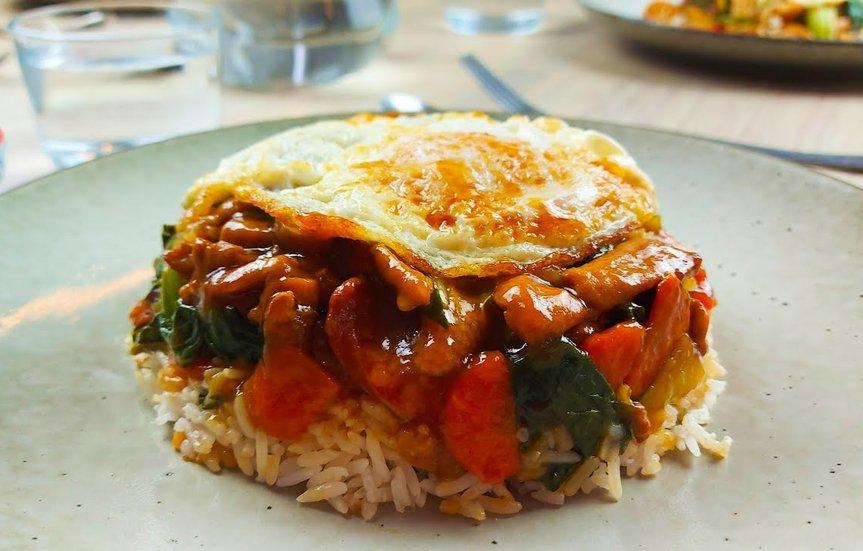
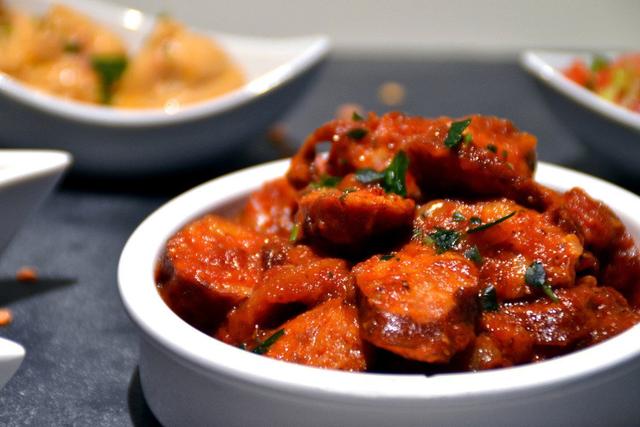
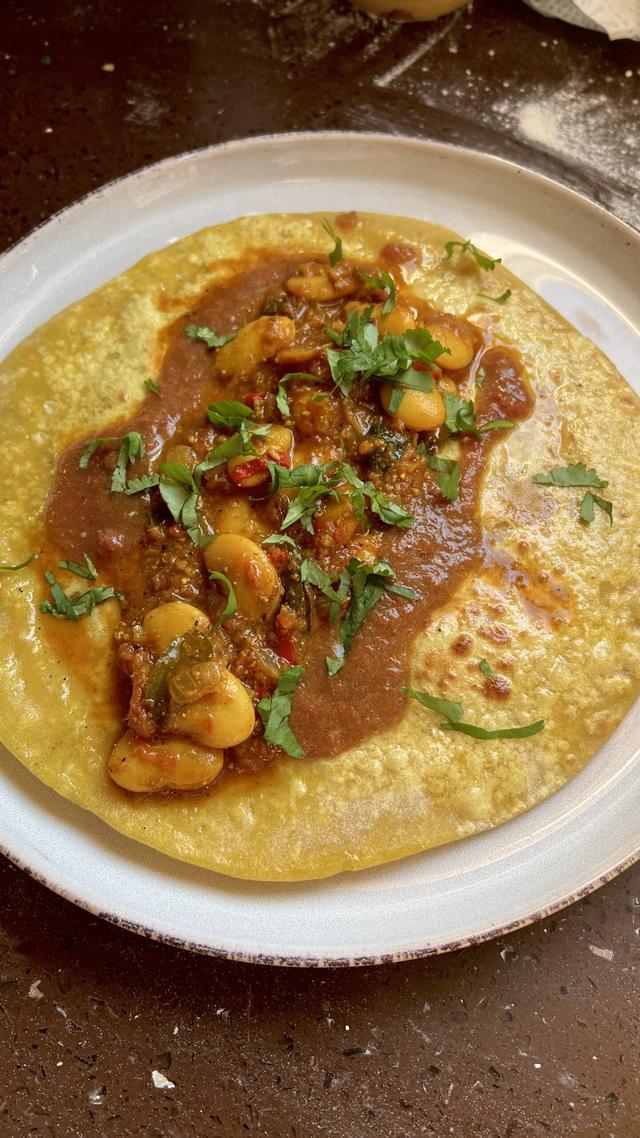


Music
Mauritian music is a vibrant blend of diverse cultural influences, with Sega and Seggae being the most prominent genres. Sega, recognized by UNESCO as Intangible Cultural Heritage, originated from the music of African and Malagasy slaves and features traditional instruments like the ravanne and maravanne. Seggae, a fusion of Sega and reggae, was pioneered by Kaya and gained popularity on the island. Other popular genres include reggae, zouk, soukous, and various forms of Indian music.
Here's a more detailed look:
- Sega: This is the traditional music of Mauritius, deeply rooted in the island's history and culture. It's characterized by lively rhythms, often accompanied by singing in Mauritian Creole, and is known for its joyful, festive atmosphere.
- Seggae: This genre blends the rhythms of Sega with the melodic structure of reggae, creating a unique Mauritian sound. Musicians like Kaya are credited with popularizing this fusion.
- Other Influences: Mauritian music also reflects the island's multicultural heritage, with influences from African, Indian, and French music. Popular genres like reggae, zouk, and various forms of Indian music are also enjoyed on the island.
- Instruments: The ravanne (a frame drum), the maravanne (a scraper), and the triangle are key instruments in Sega music. These instruments contribute to the unique sound and rhythm of Sega and Seggae.
- UNESCO Recognition: The significance of Mauritian Sega has been recognized by UNESCO, highlighting its importance as a cultural heritage.
In 2025, Mauritius will emerge as a key music hub, hosting major events like the African Asia Pacific Choir Games (Sept 27–Oct 5), the Fête de la Musique, and the Mauritius Open Air Festival. These festivals will spotlight traditional Sega and Seggae alongside global genres such as reggae, zouk, and Indian music, featuring artists like Les Zilwa, DJ Ejilen, and DJ Emran. With tickets for MOAF 2025 now available, Mauritius is set to attract international visitors and promote cultural exchange through music.

The Arts
Mauritius boasts a vibrant arts scene that blends traditional crafts with contemporary creativity, serving as a powerful medium for cultural preservation and expression. From basketry and ship modeling to digital media and sculpture, artistic diversity thrives across the island. Community murals celebrate local history and legends, while a growing contemporary art movement—particularly in hubs like Port Louis—showcases a fusion of global and local influences through galleries, exhibitions, and street art. Public art initiatives, supported by both government and collectives, bring creativity into daily life. Major events like the Mauritius International Art Fair and Festival du Livre attract global attention, while local craft markets and government grants support artists and promote cultural exchange.
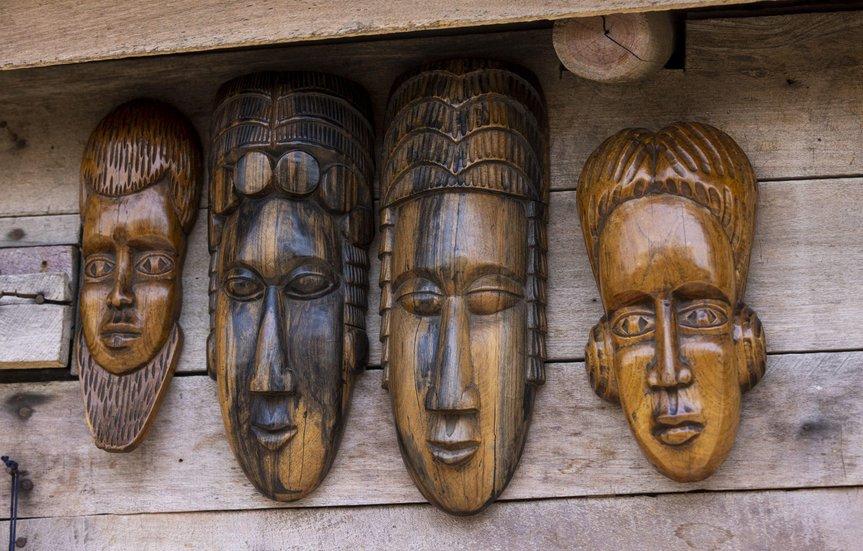




PEOPLE
Ethnic Groups
Mauritius is renowned for its diverse ethnic makeup, with a population composed primarily of Indo-Mauritians, Creoles, Sino-Mauritians, and Franco-Mauritians. Indo-Mauritians, the largest group at around 68%, are descendants of Indian indentured laborers and maintain cultural ties through languages like Bhojpuri, Tamil, Hindi, Urdu, and Telugu. Creoles make up about 27% of the population and are largely of African and French descent, often with mixed heritage. Sino-Mauritians, around 3%, are descendants of Chinese traders, while Franco-Mauritians, approximately 2%, trace their roots to French colonists. A small portion of the population also has British or other European ancestry. This ethnic diversity has created a vibrant cultural landscape, enriched by a blend of traditions, languages, and religions. While English is the official language, Mauritian Creole—a French-based patois—is the most widely spoken, reflecting the island’s unique multicultural identity.
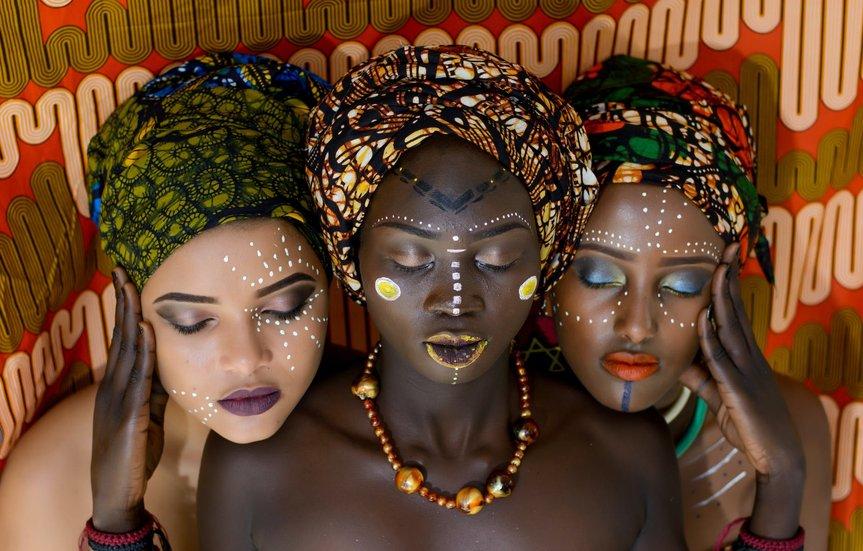
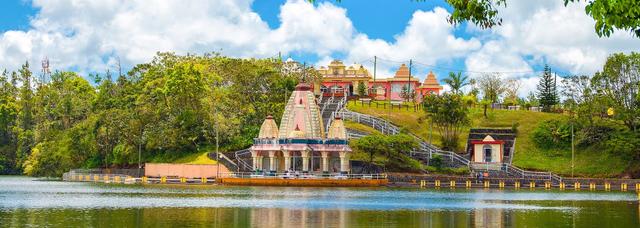

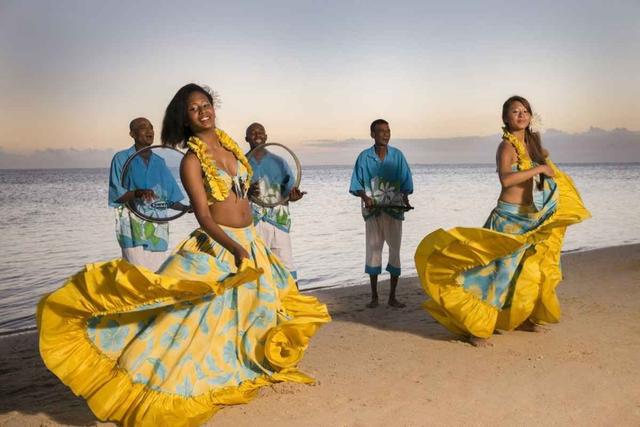
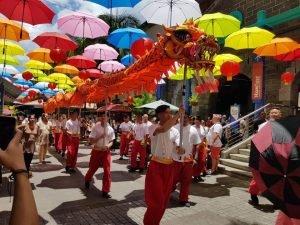
Religions
Mauritius is a religiously diverse nation with no official state religion, and its constitution guarantees freedom of religion, allowing citizens to practice and propagate their beliefs freely. Hinduism is the most widely practiced religion, followed by approximately 48% of the population, mainly of Indian descent. Christianity, particularly Catholicism, is observed by around 32%, while about 17% of Mauritians, also primarily of Indian origin, practice Islam. Smaller communities follow other religions, including Buddhism and various Chinese-related faiths. The government recognizes several religious groups and provides state subsidies proportional to their population size. Interfaith harmony is a hallmark of Mauritian society, promoted through platforms like the Council of Religions, which fosters dialogue and collaboration among different faiths.
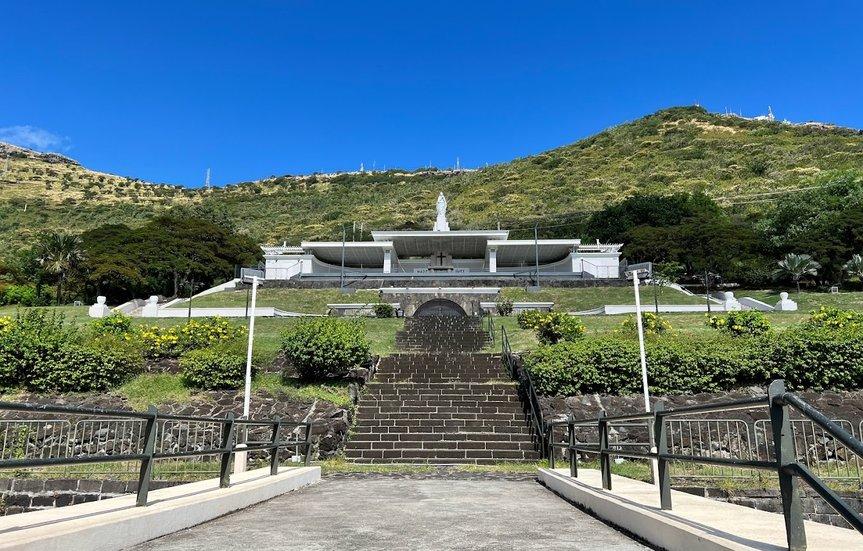
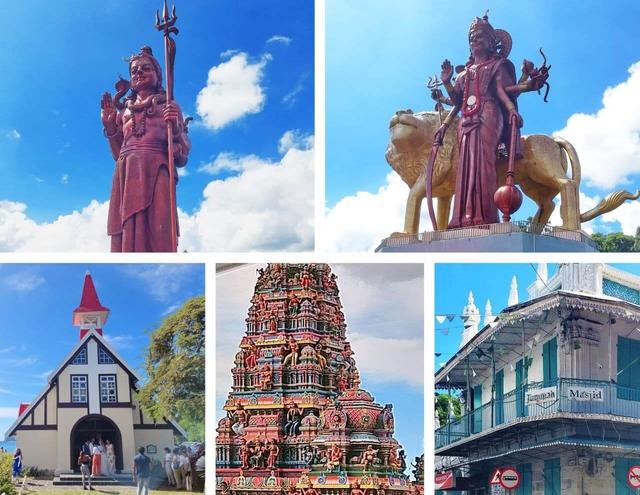
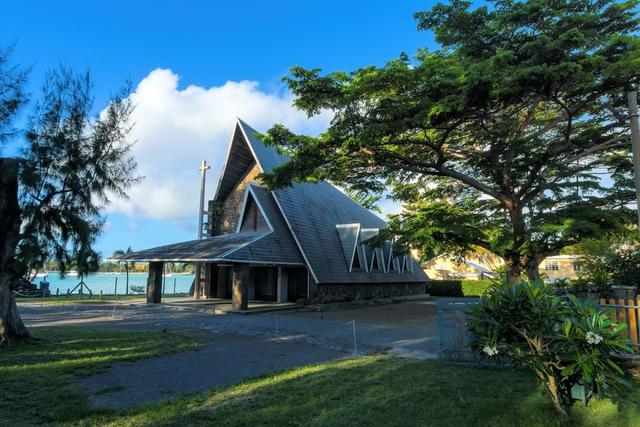
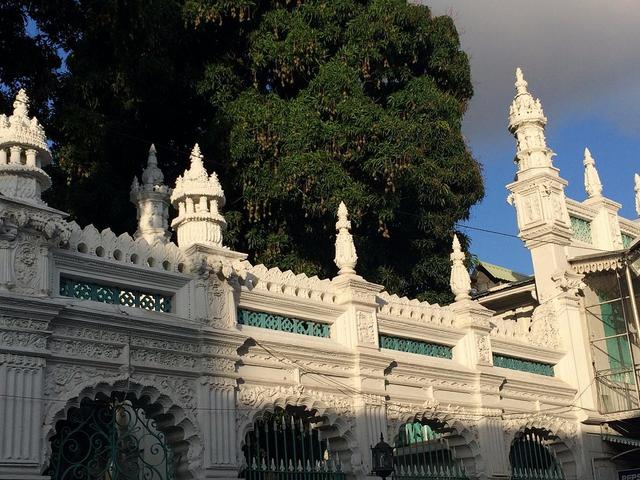
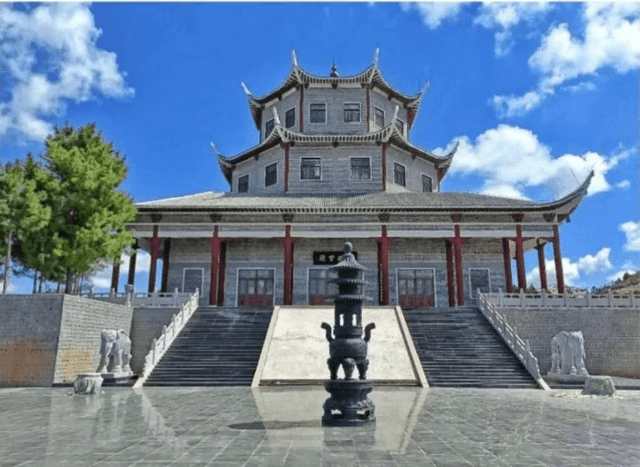
Settlement Patterns
Mauritius displays diverse settlement patterns shaped by its colonial past, agricultural development, and modern economic growth. Early settlements began along the coast, particularly on the east near Vieux Grand Port, established by the Dutch in the 17th century for strategic and resource-based reasons—a pattern continued by the French and British for trade and administration. The rise of sugar cane plantations further influenced settlement, drawing populations to fertile northern and western regions. As the economy diversified, towns and cities like Port Louis emerged as key administrative, commercial, and industrial hubs. Rural villages developed across the island, often tied to agriculture or natural resources. Today, Mauritius features a mix of dense coastal urban centers, tourist hubs, and scattered rural communities inland. Settlement patterns continue to evolve, driven by economic development, tourism, and migration, while remaining rooted in historical influences like colonization and plantation agriculture.

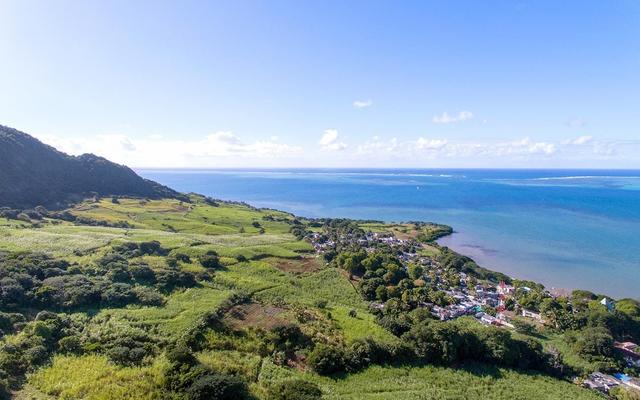
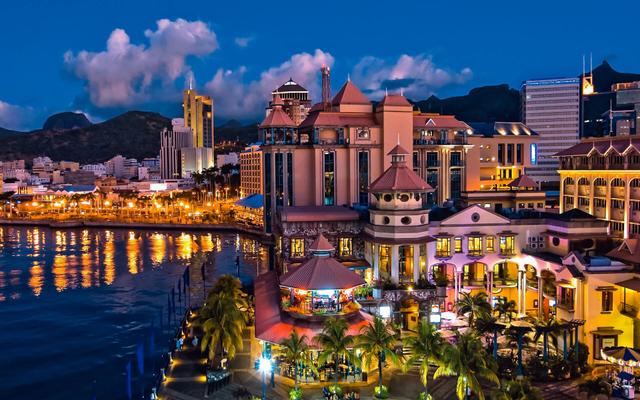
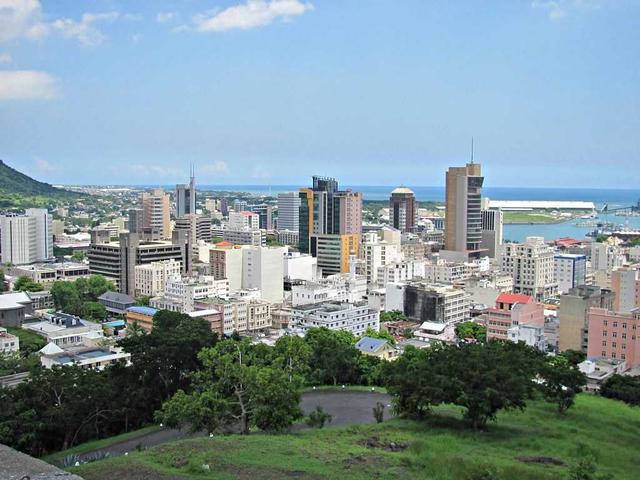
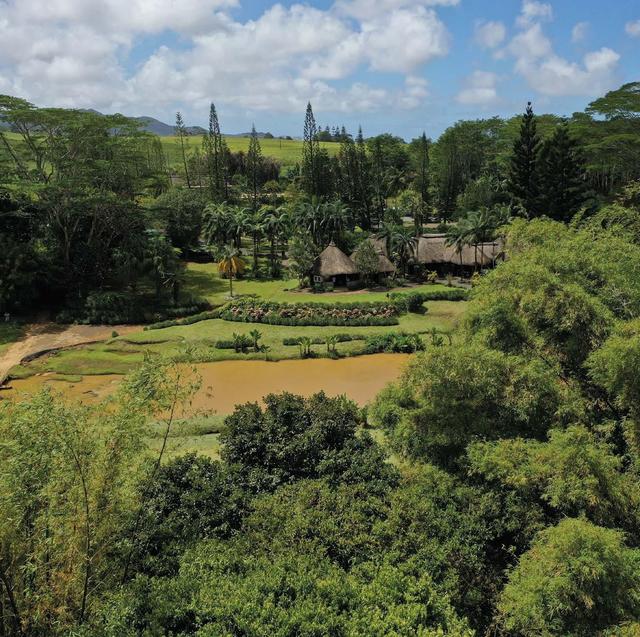
Demographic Trends
Mauritius has undergone notable demographic changes in recent decades, characterized by population growth, an aging population, and shifts in population density. As of 2022, the population stood at 1,235,260, with a median age of 38 and a life expectancy of 79.8 years, reflecting improved healthcare and living standards. While population density rose from 475.9 in 1980 to 630.7 in 2023, projections indicate a slight population decline of about 17,000 between 2024 and 2030. The age structure is shifting, with a decreasing proportion of children under 15 and a growing segment of people aged 60 and over, driven by declining fertility rates and increased longevity. Urbanization trends have fluctuated slightly, as has the population growth rate, which saw a dip in 2023 after a small increase from 2022. The population maintains a nearly equal gender ratio. These trends are largely influenced by effective family planning, cultural shifts, and advancements in public health, positioning Mauritius as a nation facing the demographic challenges of an aging society.
Touristic Cities
Port Louis
Port Louis, the capital of Mauritius, is a vibrant city rich in history and cultural diversity. Among its top attractions are the Aapravasi Ghat, a UNESCO World Heritage Site, and the Blue Penny Museum, home to rare stamps and art. Visitors can enjoy panoramic views from Citadel Fort Adelaide, shop at the bustling Central Market, or admire the architecture of the Jummah Mosque. Just outside the city, the Sir Seewoosagur Ramgoolam Botanical Garden showcases unique plant species. For leisure, the Caudan Waterfront offers dining, shopping, and entertainment, while Mauritius Chinatown adds a flavorful cultural experience.
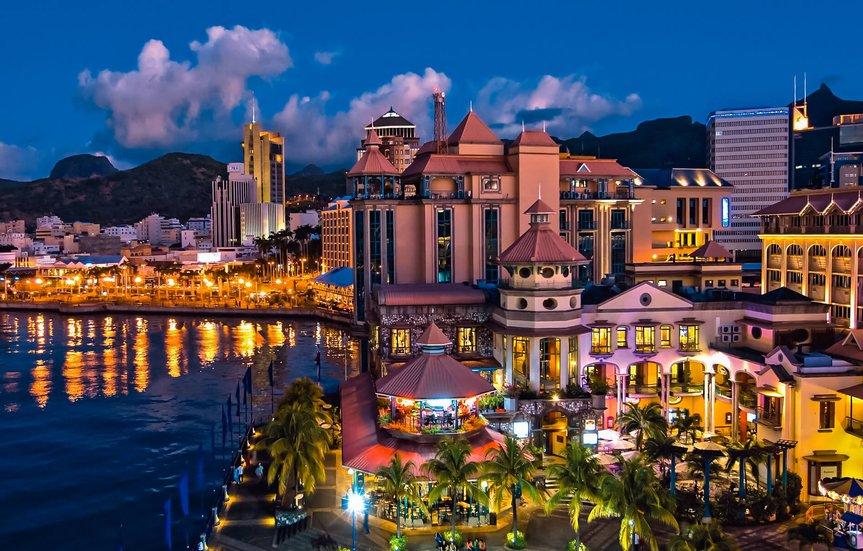

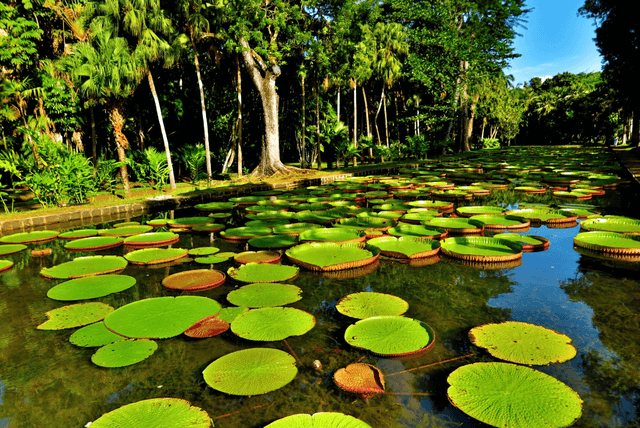
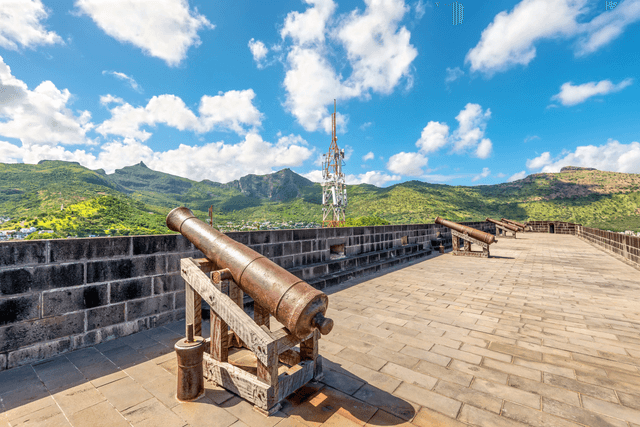
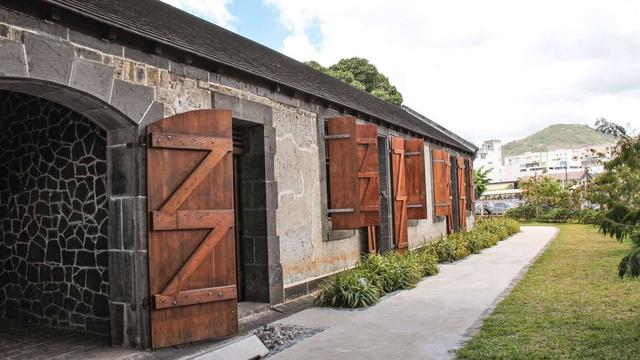
Rivière Noire
Rivière Noire, located on the southwest coast of Mauritius, is a haven for nature lovers and adventure seekers. The district is home to iconic attractions such as the Chamarel Seven Colored Earth Geopark, known for its vibrant sand dunes, and the nearby Chamarel Waterfall, one of the tallest in the country. Nature enthusiasts can explore the Black River Gorges National Park, rich in endemic flora and fauna, while history and hiking converge at Le Morne Brabant, a UNESCO World Heritage Site. Visitors can also enjoy dolphin watching at Tamarin Bay or experience thrilling activities at Casela Nature Parks, making Rivière Noire a diverse and unforgettable destination.

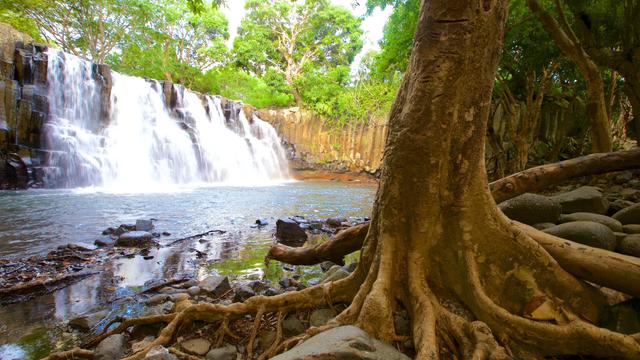
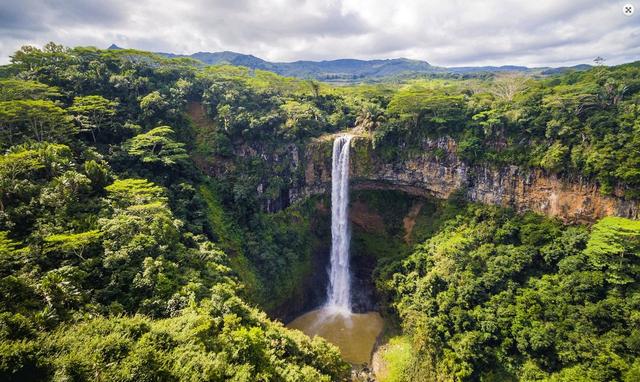
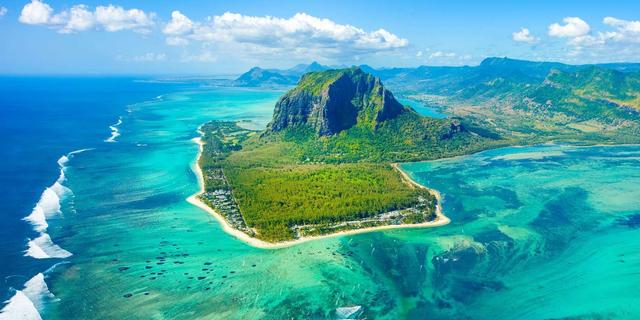
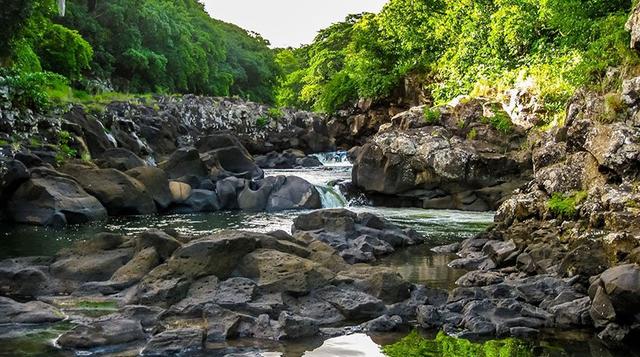
ACCOMODATION
Guest Houses
Euro Vacances Guest House: A charming guesthouse known for its homely feel and convenient location near local attractions.
Maison D'hotes Coignet: Offers a cozy retreat with beautifully decorated rooms and a lush garden.
Sunset View: Provides spacious accommodations with modern amenities, suitable for families or larger groups.
AJ Studio Apartment: A great option for those who prefer self-catering accommodations.
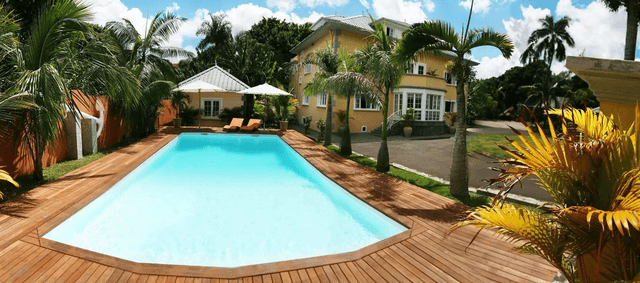
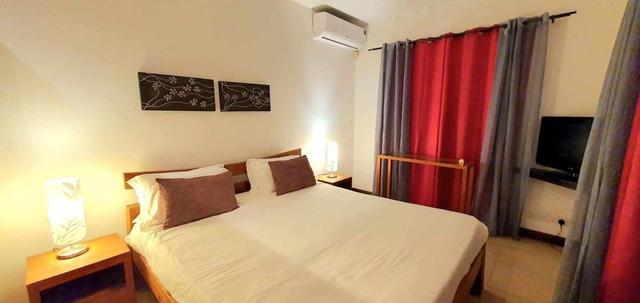
Hotels and Resorts
One&Only Le Saint Géran (Belle Mare)
A legendary 5-star resort on the east coast, known for its private peninsula, elegant villas, fine dining, and excellent service. Perfect for couples and families.
Four Seasons Resort Mauritius at Anahita
Located on the east coast, this luxury resort offers spacious villas with private pools, a championship golf course, and serene lagoon views.
Constance Prince Maurice (Poste de Flacq)
A romantic hideaway featuring overwater villas, gourmet restaurants, and lush tropical gardens. Known for exclusivity and tranquility.
The Oberoi Beach Resort (Turtle Bay)
A peaceful and luxurious retreat in the north-west, offering stunning sunsets, exceptional spa services, and traditional Mauritian architecture.
LUX Grand Baie*
A chic and modern resort in the lively northern region, ideal for travelers who want to combine luxury with nightlife, shopping, and entertainment.
Heritage Le Telfair Golf & Wellness Resort (Bel Ombre)
A colonial-style 5-star resort on the south coast, offering a blend of luxury, golf, wellness, and nature in a heritage setting.
Shangri-La Le Touessrok (Trou d’Eau Douce)
Famous for its secluded beaches and access to the private island of Ilot Mangénie, this resort is ideal for honeymooners and families seeking indulgence.
Veranda Pointe aux Biches
A relaxed, eco-friendly 4-star resort with barefoot luxury, ideal for casual travelers and families looking for an authentic Mauritian experience.

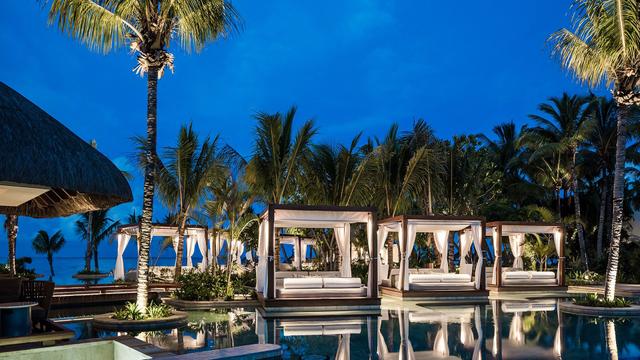
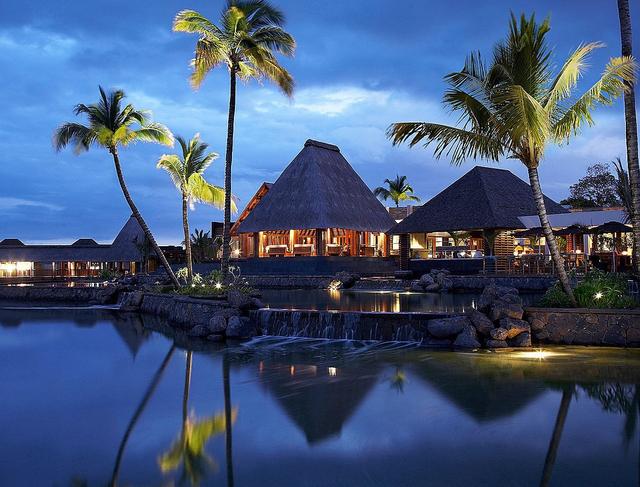
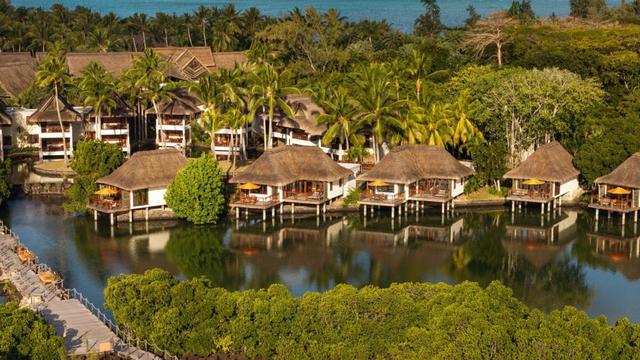
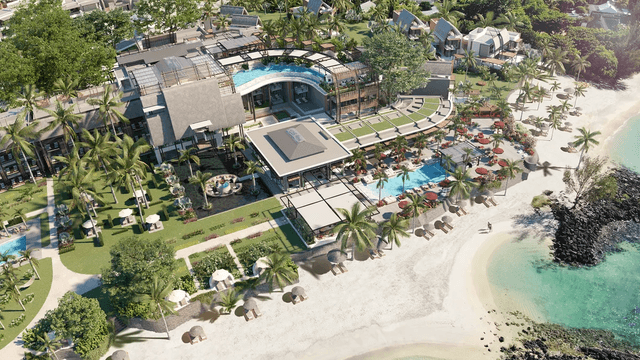
Campings
Otentic Eco Tent Experience (Grande Rivière Sud Est)
A leading eco-camp on the east coast, offering safari-style tents near the river and beach. Guests enjoy outdoor adventures like kayaking, hiking, and biking, combined with sustainable living and local food.
Bubble Lodge (Bois Chéri & Ile aux Cerfs)
A luxurious glamping option, featuring transparent bubble tents set in serene tea plantations or on a private islet. Perfect for stargazing, romance, and nature immersion in comfort.
La Vieille Cheminée (Chamarel)
A charming farm lodge in the lush Chamarel region, offering rustic chalets and camping options amid forests and sugarcane fields. Ideal for nature lovers, with access to hiking trails and waterfalls.
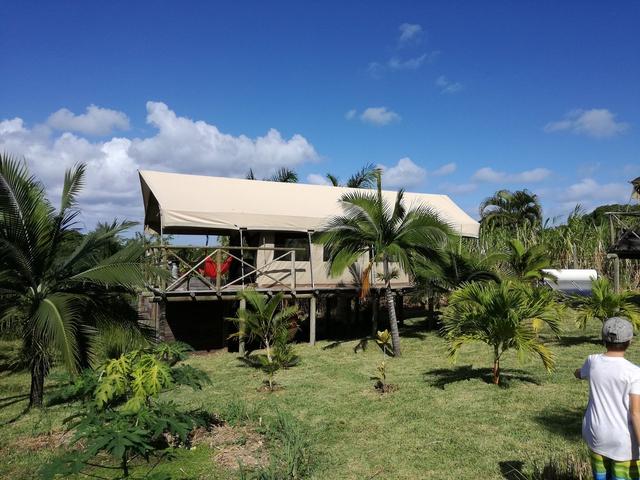
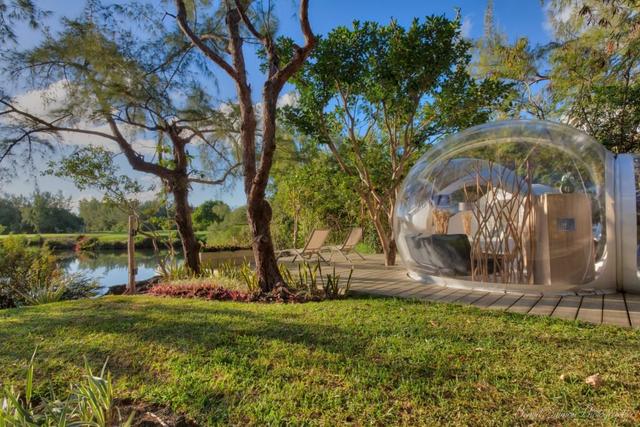

Requirements for visa
Documents to be submitted for your application
To obtain a visa for Mauritius, applicants generally need a valid passport with at least six months of validity, a completed visa application form, passport-size photos, proof of sufficient funds, and a return or onward ticket. Depending on the purpose of the visit, additional documents like a hotel booking, invitation letter, or business-related documents might be required. Here's a more detailed breakdown:
General Requirements:
- Passport: A valid passport with at least six months of validity beyond the intended stay.
- Visa Application Form: A completed and signed visa application form.
- Passport Photos: Recent passport-size photographs.
- Proof of Funds: Evidence of sufficient funds to cover the duration of the stay (e.g., bank statements).
- Return Ticket: A confirmed return or onward ticket.
- Accommodation: Proof of accommodation, such as a hotel booking.
Additional Requirements (depending on the visa type):
- Business Visa: A letter from a local sponsor or company, and potentially other business-related documents.
- Student Visa: A letter from the educational institution, proof of enrollment, and potentially a sponsorship letter from parents.
- Tourist Visa: A confirmed hotel reservation.
- Minors: Parental consent letter, birth certificate, and copies of parents' passports.
Other Important Considerations:
- COVID-19 Requirements: Check the latest COVID-19 related entry requirements and vaccination status.
- Quarantine: Unvaccinated travelers may need to book and pay for quarantine accommodation.
- Mauritius All-In-One Travel Form: Travelers are recommended to fill out the "Mauritius All-In-One Travel Form" before travel.
Useful links
- E-Visa Portal
- Madagascar Embassy Directory
- Government Tourism Website
Economy of Mauritius
Mauritius has transformed from a low-income, agriculture-dependent nation to a diversified, upper-middle-income economy. Key sectors include tourism, financial services, manufacturing, and fishing. While the COVID-19 pandemic caused a significant contraction, the economy has shown resilience, with strong growth rebounds in tourism and other sectors.
Tourism
Tourism is a crucial pillar of the Mauritian economy, contributing significantly to GDP—accounting for around 8% in 2023, according to StraFin Corporate—and serving as a major source of foreign exchange and employment. The sector supports both direct jobs in hospitality and indirect employment in transport, retail, and food services. It also drives domestic and foreign investment, particularly in real estate, hotels, and infrastructure such as airports and roads, which benefit both tourists and locals. Mauritius's natural beauty, tropical climate, and cultural diversity continue to attract global visitors, making tourism a key driver of economic activity. However, the sector faces challenges from climate change, including rising sea levels and coral bleaching, which threaten the island's natural appeal. Additionally, growing labor shortages in tourism, construction, and ICT could impact sustainable growth, prompting efforts to diversify the economy through sectors like financial services and information technology.
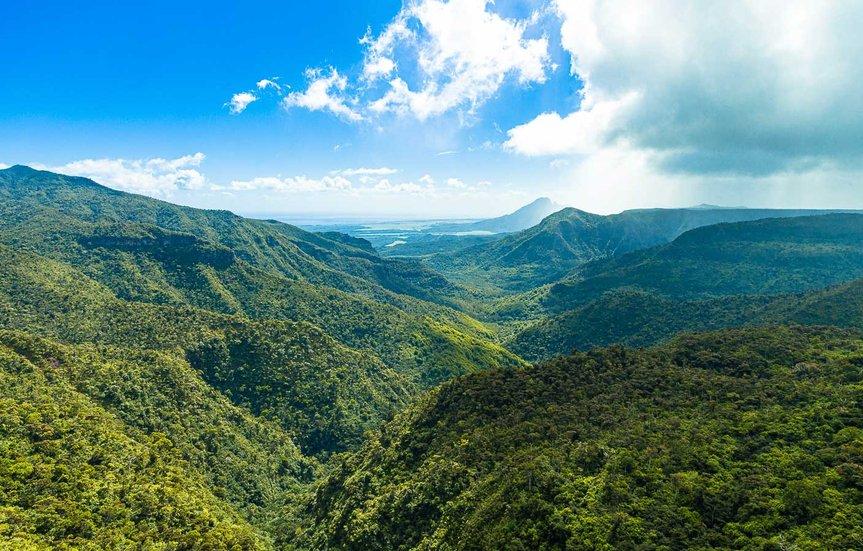
Fishing
Mauritius's fishing industry, though contributing about 1% to the national GDP, plays a vital economic and social role by employing approximately 11,000 people and supporting livelihoods in coastal communities. While local fish production, valued at around 1 billion rupees, does not fully meet domestic demand, the sector generates substantial revenue through license fees, import permits, and fish product sales. Mauritius has evolved into a key seafood hub in the Western Indian Ocean, with integrated operations in shipping, cold storage, processing, and transshipment, particularly for tuna vessels. In 2004, the sector earned US$112 million in export revenue, underscoring its international importance. Coastal fisheries remain essential for employment, while aquaculture—especially marine cage farming of red drum—has expanded, reaching 3,300 tonnes in 2020. The country is also exploring diversification into value-added and non-premium seafood products. However, challenges persist, including outdated monitoring systems, the need for upgraded aquaculture infrastructure, and barriers to private investment, which must be addressed to ensure sustainable growth.
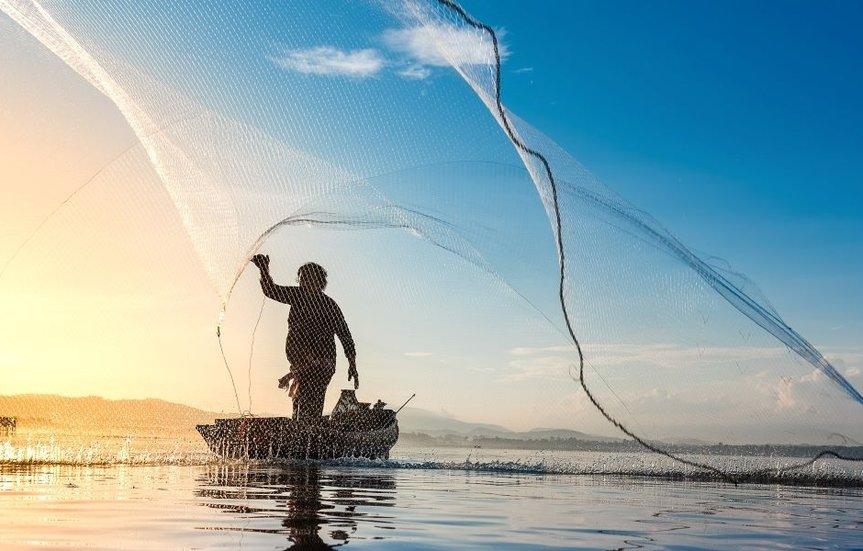
Manufacturing
Mauritius has developed a robust and diversified manufacturing sector that contributes approximately 13–17% to the country's GDP and employs a significant share of the workforce. Once reliant on sugar exports, the country has successfully transitioned into a more industrialized economy, with key sectors now including textiles and apparel, seafood processing, and agro-industries. In recent years, Mauritius has expanded into high-value manufacturing such as medical devices, precision engineering, pharmaceuticals, and high-end jewelry. This shift toward value addition and niche markets, supported by government incentives and innovation, has positioned Mauritius as a growing regional manufacturing hub. Leveraging preferential trade agreements, the country exports to markets in the EU, USA, and South Africa. The focus on adapting to global market trends, investing in quality, and building regional supply chains has made manufacturing a cornerstone of Mauritius’s economic transformation and resilience.
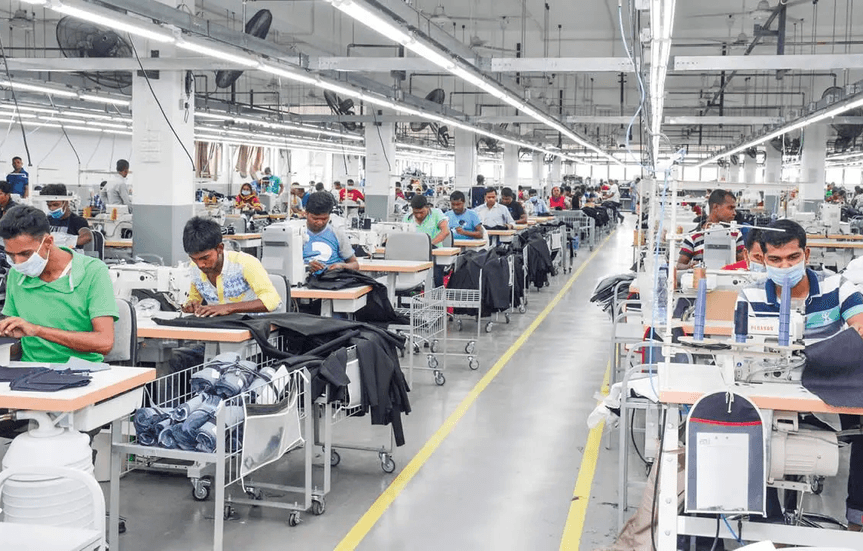
Finance
Mauritius has built a resilient and diversified economy, transitioning from a monocrop sugar-based system to one driven by financial services, tourism, and information and communications technology (ICT). The financial sector, particularly global business services, plays a key role in attracting foreign investment and strengthening reserves, while tourism remains a major source of foreign exchange and has rebounded strongly post-COVID-19. The ICT sector continues to grow, supported by government initiatives aimed at digital transformation. Despite the economic recovery, high public debt—exacerbated by pandemic-related spending—remains a concern, prompting fiscal consolidation efforts. Mauritius has shown resilience to global shocks, including the Ukraine conflict and pandemic disruptions, and continues to rank high in economic freedom, particularly in business, investment, and financial operations. Recent developments include a rebound in GDP growth, easing inflation, strong private investment in sectors like construction, and ongoing tax reforms to improve revenue collection and investor confidence.

Trade
Mauritius maintains a diverse trade profile, with exports primarily focused on sugar, clothing, and fish, while imports consist mainly of refined mineral fuels, capital goods, machinery, and raw materials such as cotton and cereals. The European Union—especially France and the United Kingdom—remains a key trading partner, along with South Africa, the United States, India, China, and Madagascar. Mauritius is actively involved in regional trade through blocs like COMESA and SADC and has established free trade agreements with countries such as Turkey and preferential trade arrangements with Pakistan. As a beneficiary of the African Growth and Opportunity Act (AGOA), Mauritius also enjoys preferential access to the U.S. market. Despite these efforts, the country typically runs a trade deficit due to high import volumes, especially in fuel. To address this, the government continues to pursue economic diversification, expanding into sectors like financial services, tourism, ICT, and seafood processing to reduce reliance on traditional exports such as sugar and textiles.
Labor and Taxation
Mauritius has a well-regulated labor market and a competitive, investor-friendly taxation system that supports both local and foreign investment. The labor force is skilled, multilingual, and concentrated in key sectors such as tourism, financial services, manufacturing, and ICT, backed by a high literacy rate and strong focus on education and training. Labor laws ensure minimum wages, social security contributions, and protection against unfair dismissal, although sectors like tourism and construction face labor shortages due to demographic shifts and emigration. On the taxation front, Mauritius applies a flat 15% corporate and personal income tax rate, with no capital gains, inheritance, or dividend withholding taxes. The 15% Value Added Tax (VAT) and a wide network of Double Taxation Avoidance Agreements (DTAAs) further enhance the country’s appeal. Ongoing tax reforms aim to boost transparency and compliance while maintaining Mauritius’s position as a competitive business hub.
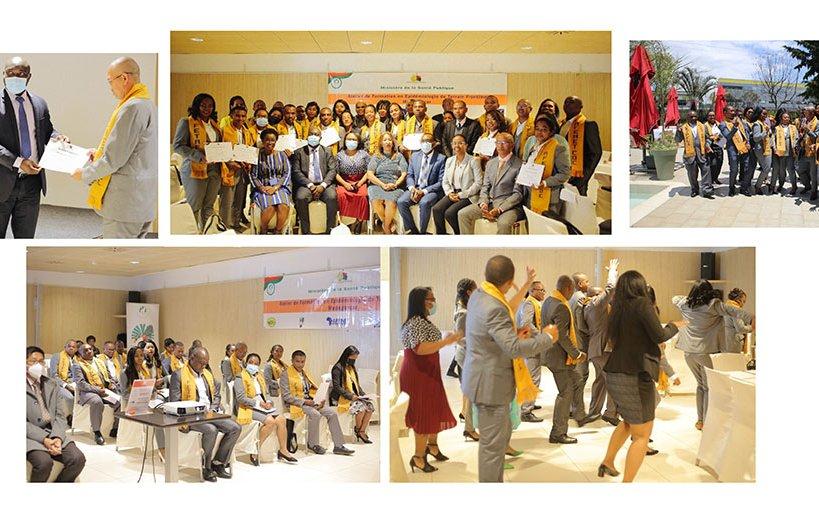
Transportation
Mauritius offers a variety of transportation options, including buses, taxis, car rentals, and the Metro Express light rail system. Buses are the most common and affordable means of public transport, with both standard and express services, though frequency may vary in rural areas. Taxis are widely available, especially in urban zones, but fares should be agreed upon in advance as meters are rarely used. Car rentals provide flexibility for exploring the island, with driving on the left side and proper insurance being important considerations. The Metro Express offers a modern transit option linking Port Louis to Curepipe, requiring a prepaid MECard for access. Additional transport includes shared taxis on busy routes and water taxis or ferries for coastal travel, offering diverse and accessible mobility across the island.




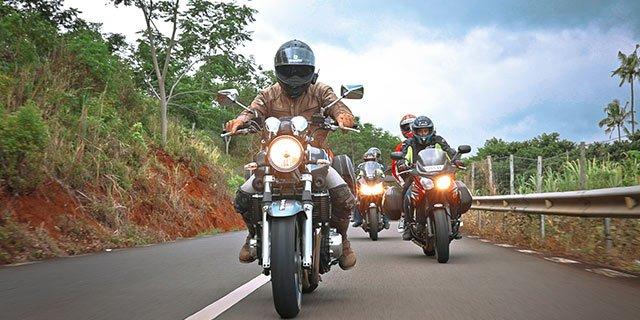
Telecommunication
Mauritius Telecom (MT), established in 1992 through the merger of Overseas Telecommunications Services and Mauritius Telecommunication Services, is the leading telecommunications and internet service provider in Mauritius. It holds a dominant market position, offering a wide range of services including fixed-line, mobile, internet, TV, and mobile money to both residential and business customers. MT has significantly contributed to the country's socio-economic development by investing in robust infrastructure, such as island-wide broadband and advanced 4G LTE and expanding 5G capabilities. A strategic partnership with France Telecom (now Orange S.A.), which owns 40% of its shares, has further strengthened its position. Now a private company, MT continues to focus on innovation, expanding Wi-Fi access and launching major projects like the T4 cable to improve international connectivity. By 2025, MT aims to achieve 98% 5G population coverage, reinforcing its commitment to bridging the digital divide and supporting Mauritius’s digital future.
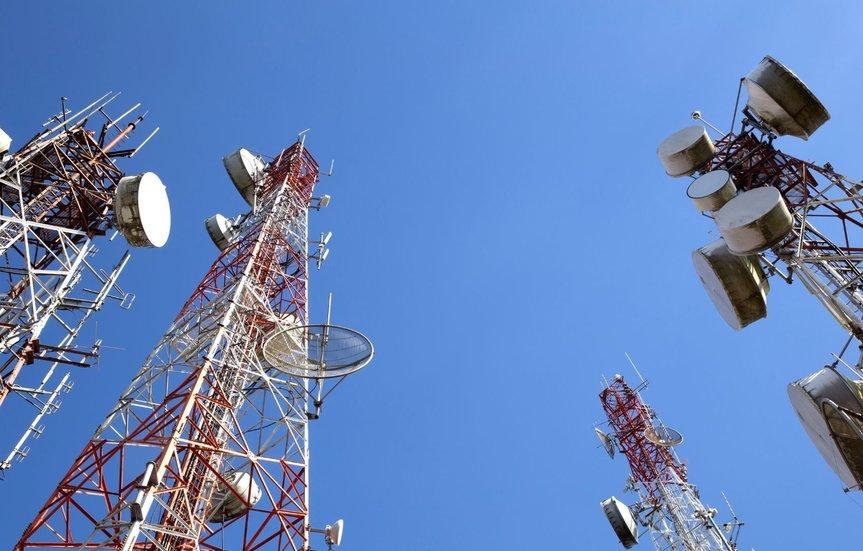
Latest News in Mauritius
Politics
The first president of independent Namibia, Sam Nujoma, has died at the age of 95 in the capital Windhoek, the country's current leader has announced.
Politics
Ugandan President Yoweri Museveni has officially announced his intention to seek re-election in the 2026 presidential race, extending his nearly four-decade rule. Museveni, who has been in power since 1986, is once again positioning himself as the steady hand guiding Uganda through challenges. His decision has sparked mixed reactions, with supporters praising his leadership and longevity, while critics call for fresh leadership and political reform. As the nation looks ahead to the 2026 elections, Uganda braces for a heated political contest.
Politics
Peace Agreement with DRC Rwanda and the Democratic Republic of Congo (DRC) signed a U.S.-brokered peace deal aimed at ending conflict and promoting regional trade. Rwanda agreed to stop supporting armed groups like M23 rebels, though it denies involvement. Tensions remain, and President Kagame is cautious about whether the peace will last.
Wildlife
Tanzania has announced that all foreign tourists visiting Mainland Tanzania will be required to purchase a mandatory travel insurance policy upon arrival, beginning January 2026. The new regulation, issued by the Ministry of Finance on July 4, 2025, is part of the government reforms in the country’s 2025/26 financial year agenda. According to the notice, the measure will apply to all non-citizens, with the exception of visitors from countries that are part of the East African Community (EAC) and the Southern African Development Community (SADC). Citizens from these regions will continue to be exempt from the requirement.
Environment
In light of the growing food insecurity crisis across many African nations, heads of state and agriculture experts gathered in Nairobi, Kenya, this week to discuss solutions to address food shortages, especially in regions severely affected by climate change, political instability, and economic challenges. The two-day summit, titled “Agriculture and Climate Resilience: A Pan-African Strategy”, brought together government officials, NGOs, scientists, and international organizations to create a comprehensive strategy to improve agriculture, nutrition, and sustainable food systems across the continent.
Tech & Science
In 2025, Artificial Intelligence (AI) isn’t just a futuristic buzzword - it’s the secret weapon behind some of the world’s most successful content creators. From bloggers and YouTubers to podcasters and marketers, AI-powered tools are changing the way we brainstorm, write, design, and edit. If you've ever struggled with writer’s block, lacked design skills, or wished for faster content creation - AI might be your best assistant yet. Here’s how AI is revolutionizing the creative industry and how you can use it to boost your projects.
